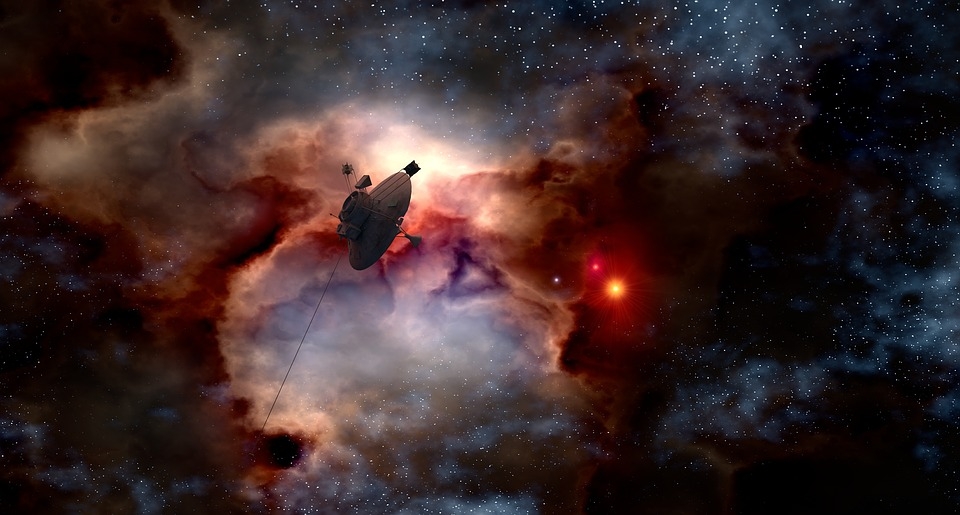Agencies like NASA are already exploring possibilities in faster space travel including ways to launch satellites or probes into space. Recently, NASA is already testing out a new kind of propulsion system for launching future probes and missions into interstellar space.
The agency teamed up with Johns Hopkins Applied Physics Laboratory to develop a solar thermal propulsion system to get probes into interstellar space, which is well beyond our distant planet, Pluto. It also happens to be very difficult to get past the heliopause, which is when the Sun’s influence ends, due to the fact that it is very far away. In context, the Voyager 1 and Voyager 2 probes have already reached heliopause, and this took 50 years of traveling just to get to interstellar space. This has prompted the collaboration to come up with a way to get probes or spacecrafts into interstellar space much quicker.
NASA has already revealed that a mission that would need this propulsion system could be launched by 2030. This kind of solar propulsion is met through a solar thermal engine that absorbs hydrogen from the Sun, which would then be heated and then ejected through a nozzle to produce thrust. One of the biggest challenges this would entail, however, is that it would require the spacecraft to get very close to the Sun.
Nevertheless, the developments made since the collaboration began have proven that this is possible. “It’s really easy for someone to dismiss the idea and say ‘On the back of the envelope it looks great, but if you actually build it, you’re never going to get those theoretical numbers,’” said APL materials scientist and team leader Dr. Jason Benkoski. “What this is showing is that solar propulsion is not just a fantasy. It could actually work.”
Previously, NASA and ESA’s Hubble Space Telescope was able to pick up a bright flash of energy back in May which left astronomers wondering about the source of the light that produced the gamma rays. First picked up by NASA’s Neil Gehrels Swift Observatory, the Hubble was then pointed towards the source of the burst. They initially found an event that produced more energy in a span of seconds than the Sun has ever produced in 10 billion years.
What made it even more surprising to astronomers was that the Hubble picked up 10 times more infrared light in the flash than expected.



 Black hole, neutron star or something new? We discovered an object that defies explanation
Black hole, neutron star or something new? We discovered an object that defies explanation  Larger and more frequent solar storms will make for potential disruptions and spectacular auroras on Earth
Larger and more frequent solar storms will make for potential disruptions and spectacular auroras on Earth  Customizing mRNA is easy, and that's what makes it the next frontier for personalized medicine − a molecular biologist explains
Customizing mRNA is easy, and that's what makes it the next frontier for personalized medicine − a molecular biologist explains  Spacesuits need a major upgrade for the next phase of exploration
Spacesuits need a major upgrade for the next phase of exploration  Our survey of the sky is uncovering the secrets of how planets are born
Our survey of the sky is uncovering the secrets of how planets are born  Why is the universe ripping itself apart? A new study of exploding stars shows dark energy may be more complicated than we thought
Why is the universe ripping itself apart? A new study of exploding stars shows dark energy may be more complicated than we thought  Why now is the time to address humanity’s impact on the moon
Why now is the time to address humanity’s impact on the moon  Genetic diseases: How scientists are working to make DNA repair (almost) a piece of cake
Genetic diseases: How scientists are working to make DNA repair (almost) a piece of cake  Could a telescope ever see the beginning of time? An astronomer explains
Could a telescope ever see the beginning of time? An astronomer explains  The brain is the most complicated object in the universe. This is the story of scientists’ quest to decode it – and read people’s minds
The brain is the most complicated object in the universe. This is the story of scientists’ quest to decode it – and read people’s minds  How do airplanes fly? An aerospace engineer explains the physics of flight
How do airplanes fly? An aerospace engineer explains the physics of flight  Tatahouine: 'Star Wars meteorite' sheds light on the early Solar System
Tatahouine: 'Star Wars meteorite' sheds light on the early Solar System  Eggs from men, sperm from women: how stem cell science may change how we reproduce
Eggs from men, sperm from women: how stem cell science may change how we reproduce  What is minoxidil, the anti-balding hair growth treatment? Here’s what the science says
What is minoxidil, the anti-balding hair growth treatment? Here’s what the science says  Archeoastronomy uses the rare times and places of previous total solar eclipses to help us measure history
Archeoastronomy uses the rare times and places of previous total solar eclipses to help us measure history  The brightest object in the universe is a black hole that eats a star a day
The brightest object in the universe is a black hole that eats a star a day  If life exists on Jupiter’s moon Europa, scientists might soon be able to detect it
If life exists on Jupiter’s moon Europa, scientists might soon be able to detect it 






























